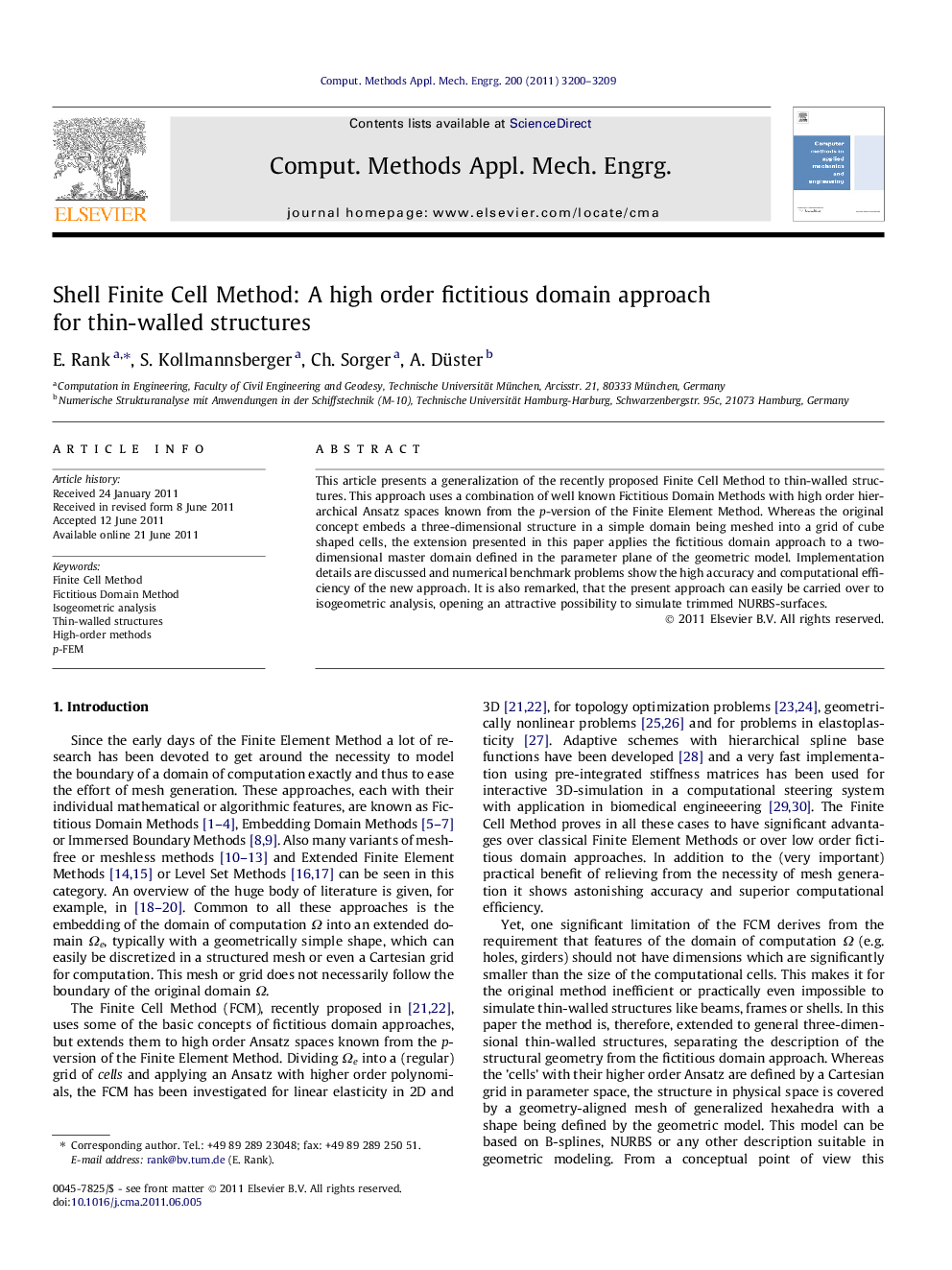| Article ID | Journal | Published Year | Pages | File Type |
|---|---|---|---|---|
| 498505 | Computer Methods in Applied Mechanics and Engineering | 2011 | 10 Pages |
This article presents a generalization of the recently proposed Finite Cell Method to thin-walled structures. This approach uses a combination of well known Fictitious Domain Methods with high order hierarchical Ansatz spaces known from the p-version of the Finite Element Method. Whereas the original concept embeds a three-dimensional structure in a simple domain being meshed into a grid of cube shaped cells, the extension presented in this paper applies the fictitious domain approach to a two-dimensional master domain defined in the parameter plane of the geometric model. Implementation details are discussed and numerical benchmark problems show the high accuracy and computational efficiency of the new approach. It is also remarked, that the present approach can easily be carried over to isogeometric analysis, opening an attractive possibility to simulate trimmed NURBS-surfaces.
► Shell Finite Cell Method is a high order fictitious domain approach. ► Trivial mesh generation even for complex geometries. ► Extension of the basic concept to curved thin-walled structures. ► Exponential rate of convergence shown. ► Close relation to isogeometric analysis for trimmed surfaces.
